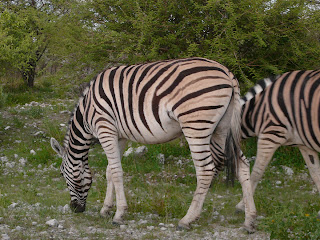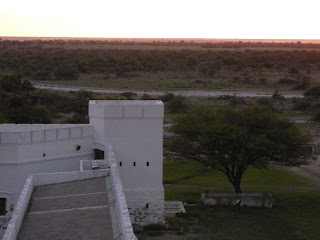It really is rather difficult to get the hang of it - helicopters are inherently unstable (while fixed wing aircraft are mostly inherently stable). The salesman demonstrated it to me briefly, and flew and controlled it effortlessly - I dare say he had practiced quite a bit. I've crashed it several times already, but so far it survives (I've fractured a few blades, but it does come with spares). Great fun.

In case you're interested: It has two rotors rotating in opposite directions (hence rendering unnecessary the tail rotor, which has to counteract the torque generated in a conventional helicopter with one main rotor (the Sikorsky Layout)). The remote control has 4 channels: You control altitude (up/down) and yaw (turn left/right) with the left stick, and pitch (forward/back) and roll (move left/right) with the right stick. So, the left stick combines collective and anti-torque control, while the right stick corresponds to the cyclic control. It's harder than it sounds...
Oh, and merry Christmas!
Or, as quiche eaters say (no offence, Achim):
Please accept with no obligation, implied or implicit, my best wishes for an environmentally conscious, socially responsible, low stress, non-addictive, gender neutral, celebration of the winter solstice holiday(tm), practiced within the most enjoyable traditions of the religious persuasion of your choice, or secular practices of your choice, with respect for the religious/secular persuasions and/or traditions of others, or their choice not to practice religious or secular traditions at all.
Furthermore, I wish you a fiscally successful, personally fulfilling, and medically uncomplicated recognition of the onset of the generally accepted calendar year 2007, but not without due respect for the calendars of choice of other cultures and without regard to the race, creed, colour, age, physical ability, religious faith, choice of computer platform, or sexual orientation of the wishes.
By accepting this greeting, you are accepting these terms:
This greeting is subject to clarification or withdrawal. It is freely transferable with no alteration to the original greeting. It implies no promise by the wisher to actually implement any of the wishes for her/himself or others, and is void where prohibited by law, and is revocable at the sole discretion of the wisher. This wish is warranted to perform as expected within the usual application of good tidings for a period of one year, or until the issuance of a subsequent holiday greeting, whichever comes first, and warranty is limited to replacement of this wish or issuance of a new wish at the sole discretion of the wisher.
.jpg)



.jpg)
.jpg)




























.jpg)
























